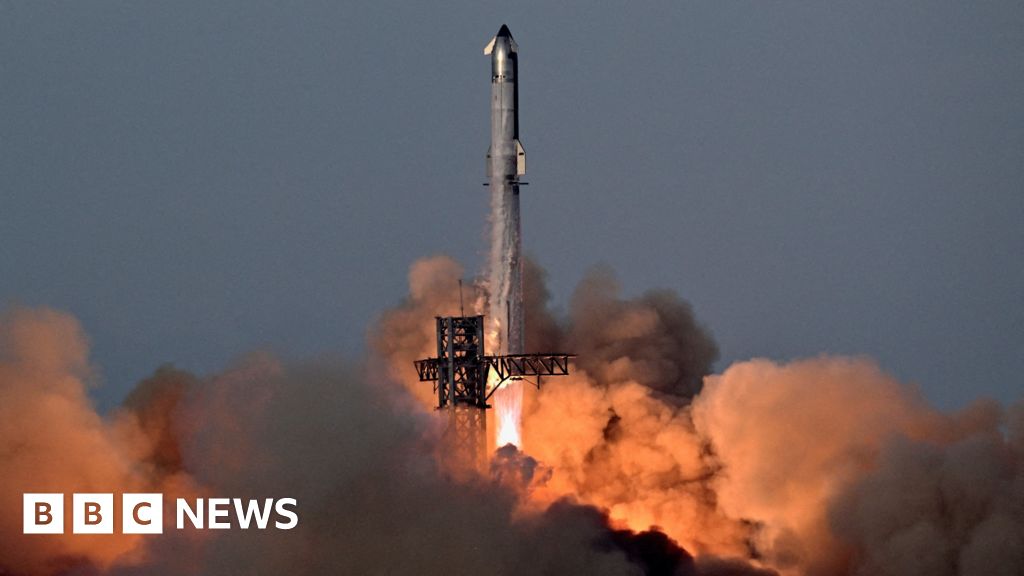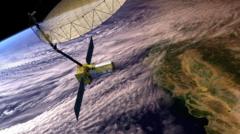CAPE CANAVERAL, Fla. — Blue Origin achieved a significant milestone on Thursday as its New Glenn rocket launched with two NASA spacecraft bound for Mars. This mission not only represents the ongoing collaboration between Blue Origin and NASA but also demonstrates advancements in interplanetary exploration capabilities.
The New Glenn rocket, measuring 321 feet (98 meters), lifted off from the Cape Canaveral Space Force Station, successfully placing NASA’s twin Mars orbiters, known as Escapade, on a long journey to the red planet. The launch had faced a delay leading up to the scheduled liftoff, primarily due to adverse weather conditions and solar storms that had affected visibility across Florida.
For the first time, Blue Origin showcased its capability of reusing the booster from the mission. After separation, the booster was successfully recovered on a floating barge 375 miles offshore, a feat that drew cheers from the Blue Origin teams and an elated Jeff Bezos, who was present at Launch Control.
“Next stop, moon!” employees shouted, celebrating the successful booster recovery, which mirrors techniques developed by SpaceX for reusing rocket stages. The New Glenn rocket previously completed its inaugural flight, which delivered a satellite into orbit but failed to recover the booster.
The twin orbiters will remain near Earth for about a year, stationed approximately one million miles away. They plan to use a gravity assist from Earth when it aligns with Mars in the fall of 2025, enabling them to reach Martian orbit by 2027.
Once in position, the Escapade spacecraft will study Mars’ upper atmosphere and its magnetic fields, providing insight into how these elements interact with solar wind. This research could shed light on the transition of Mars from a warm, wet planet to its current dry state, while also helping to inform future astronaut missions against radiation hazards.
ESCAPADE, a relatively low-budget mission estimated at under $80 million, is being managed by the University of California, Berkeley. NASA chose to book one of the New Glenn flights early to save costs, despite originally planning a launch for Fall 2024 based on ideal alignment conditions.
Named after the first American astronaut to orbit Earth, John Glenn, New Glenn is positioned as one of the future key vehicles for space exploration, capable of launching heavier payloads than Bezos’ earlier New Shepard designs. Blue Origin plans to further its ambitions by launching a prototype lunar lander on a New Glenn flight in the near future.
As NASA continues to pursue lunar exploration under the Artemis program, Blue Origin is vying for a piece of the action following a recent reopening of contracts for crewed lunar landings, expressing its commitment to an accelerated timeline.
This latest mission brings humanity closer to unlocking the secrets of Mars and paves the way for future explorations, as interest in interplanetary research continues to grow.

















